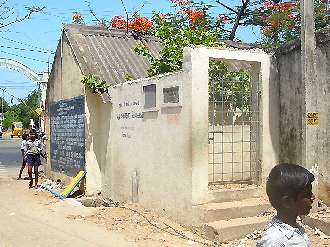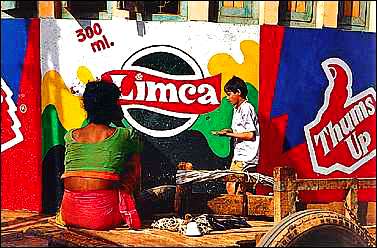April 2013 was a major deadline, of vital importance at the national level, but went almost fully ignored. 3 May constituted yet another important deadline set by the Supreme Court of India, and that too has gone largely unnoticed by activists as well as the general public for whom both deadlines determine the quality of our lives.
The Supreme Court had, in October 2012, given state governments six months’ time - till April - to ensure that all schools around the country were provided with drinking water and proper toilet facilities. That deadline has not been met. One can survive without books and blackboards but the absence of potable water and toilet facilities in schools, where millions of children spend the greater part of their wakeful hours, was (and is) not only a matter of shame six decades after independence, but also a major reason for preventable illnesses, high infant mortality rates and high dropout rates (especially among adolescent girls). All of this affects the human development indices of the future generation in the subcontinent.

![]()
Locked toilets at a school in Tamil Nadu. File pic by Krithika Ramalingam
Three weeks after that deadline imposed by the apex court, there has been not even a mention of this in the media, or contempt of court charges and no politician has so much as mentioned this, in or out of parliament. There are other, more pressing matters on their minds of course - the assembly elections in Karnataka, the choice and projection of a party candidate as future prime minister in view of next year‘s Lok Sabha elections, and so on. The health and education of millions of school children is apparently low priority matter, even if the Supreme Court took cognisance of this shocking state of affairs.
In international discussions about the Millennium Development Goals (MDG) to be reached by all countries by 2015 (just two years away), India’s poor child health and sanitation record gets mentioned repeatedly, a matter of shame for a country that sees itself as an “emerging leader“ in the global arena.
A news item on 27 April reports how, out of more than 63,300 anganwadis in Karnataka state, over 42 per cent have no toilets. In the wake of the Supreme Court order, the state’s High Court also took note of this suo moto and asked the state administration to rectify matters. Why does it require court orders to urge our policymakers to attend to the provision of such basic needs, when we are supposed to be the world’s largest democracy and when every candidate standing for elections promises to “ensure that the country progresses fully and takes its rightful place in the global enclave of nations”? Because anganwadi children do not have votes and so, do not need to be wooed with promises? Because the parents of children who attend government schools are so poor that they can be enticed with gifts/bribes of polyester saris and liquor and cash, rather than clean water and sanitation?

• CAG finds gaps in Arunachal education
• FDI: Just the facts, please
Those children whose families can afford private schools -- the urban elite, primarily -- carry bottles of drinking water along with their satchels, adding to the burden that they haul (in a literal sense) on their backs every day. I weighed the backpack of a 10 year old last month; it tipped the scales at 9 kg. A litre of bottled water adds another kg to that burden. The boy weighed 26 kg. Many years ago, when the late novelist R.K.Narayan was a member of the Rajya Sabha, he raised the issue of heavy school bags during a session in parliament. Nothing happened, though thousands of parents were in full agreement with the sentiments that Narayan expressed in parliament. I know of parents who carry their wards’ bags to the bus stop each morning because the child cannot manage it on his own. Perhaps it is time to commission a study on the contribution of heavy backpacks to school children’s stunting during their growing years.
Now the Supreme Court has decreed that water and toilets “must be provided” in all schools. It is not that there is a financial crunch. A fancy clock tower (the tallest in Karnataka, as the state government proudly declares) was installed at South End Circle in south Bangalore a few weeks ago, at a cost of Rs 90 lakh. How much does it cost to build a functional toilet in a school? Out of the 40 per cent of schools in the state that lack a common toilet and another 40 per cent which don’t have a separate toilet for girls, how many could have benefited from this ‘clock tower’ money if it had been used for a socially useful purpose? It is the same story in all states around the country, east or west, north or south. There is not a single region that can boast of having provided water and toilets in all schools. Not a single party in power has deemed it fit to accord high priority to this basic need.
A former chief minister, H.D.Kumaraswamy of Karnataka, was reported to have carried with him (or rather, his entourage carried for his use) a portable toilet whenever he went visiting rural areas as a political PR exercise, to gather votes for his party. That is an eloquent comment on the insensitivity and hauteur of our politicians, who fold their hands in supplication when they go on their electioneering rounds as voting day approaches, but close their eyes to all social amelioration plans once they get to the corridors of power.
We have come to such a pass now in the matter of siphoning off public money for showpieces, instead of spending it on social betterment - especially of the disadvantaged sections, that the courts have to intervene, whether it is about the use of red lights on VIPs’ vehicles, disposal of plastic, clearing of garbage in the metropolis or provision of toilets in schools.
The other deadline that the Supreme Court set was for the Central Pollution Control Board and its state units to explain to the court “within four weeks” what steps they were taking to tackle plastic waste disposal. That deadline expired on 3 May. The judges who delivered the ultimatum expressed shock over the fact that the country is generating over 5.6 million tonnes of plastic waste annually (over 15,300 tonnes per day) of which nearly 40 per cent lies around as non-biodegradable litter. The figures are from the Pollution Control Board itself. Delhi tops the list with 690 tonnes generated daily, with Chennai, Mumbai and Kolkata following close. Bangalore, which comes in at fifth place (out of the 60 major cities surveyed), throws up just half of the mess that Delhi spews, but life in this “IT capital” is already plagued by multiple environmental issues. Whether it is a city of rulers and national level decision-makers, or of high income global players such as software professionals, it apparently makes no difference to the callousness with which plastic waste is generated.

![]()
The enticement of advertisements. File pic
Connect this to two other recent developments -- a survey dated March 2013 which found that rural areas are taking to packaged commodities like branded juices and disposable diapers and the passing of the bill on allowing FDI (Foreign Direct Investment) in retail. You can now connect the dots to arrive at a picture that explains why we generate increasing mounds of plastic waste when the trend in developing countries is to focus on discouraging lifestyles that lead to ecological damage. In the name of development, rural populations are spending Rs 200 crore on disposable diapers (a 150 percent increase in just two years). Multinational companies that see India as a “huge market to be tapped for profits” see the need for “greater penetration” of the rural market and spend billions on advertising. TV ads reach even the illiterate rustics who see the acquisition of consumer goods that the urban elites use as a measure of progress, even if the village school does not have a toilet (or drinking water). Such is the potent power of advertising!
More FDI in retail means more supermarkets and packaged goods (even vegetables come wrapped in cling film or plastic pouches) which in turn means more plastic waste thrown out every day. I have written elsewhere about the servant maid who was given Rs 10 by her employer to buy milk for her malnourished infant. She spent the money on a can of fizzy cola, and when chided, retorted saying that she too “wanted to experience, at least once, the pleasures that the rich enjoy every day with their meals” and declared that she and her child “got a lot of pleasure” from tasting the commercial drink -- she sees film stars drinking and advertising cola drinks on TV every day.
The problem is not poverty or teeming population, it is the adoption of a highly inappropriate model of development imported from the west in the name of ‘progress,’ and the exposure of the disadvantaged sections of the population to the dubious but enticing “luxuries“ of the upwardly mobile urban yuppies through ads. The media want advertisements for the revenue they bring, the multinationals rake in the moolah through sale of junk, the government declares that foreign companies are investing in India and GDP is rising -- everybody is happy, except for the marginalised millions who are doomed to lifelong deprivation. With the result that the Supreme Court has to intervene, in everything from garbage disposal to toilets in schools.























